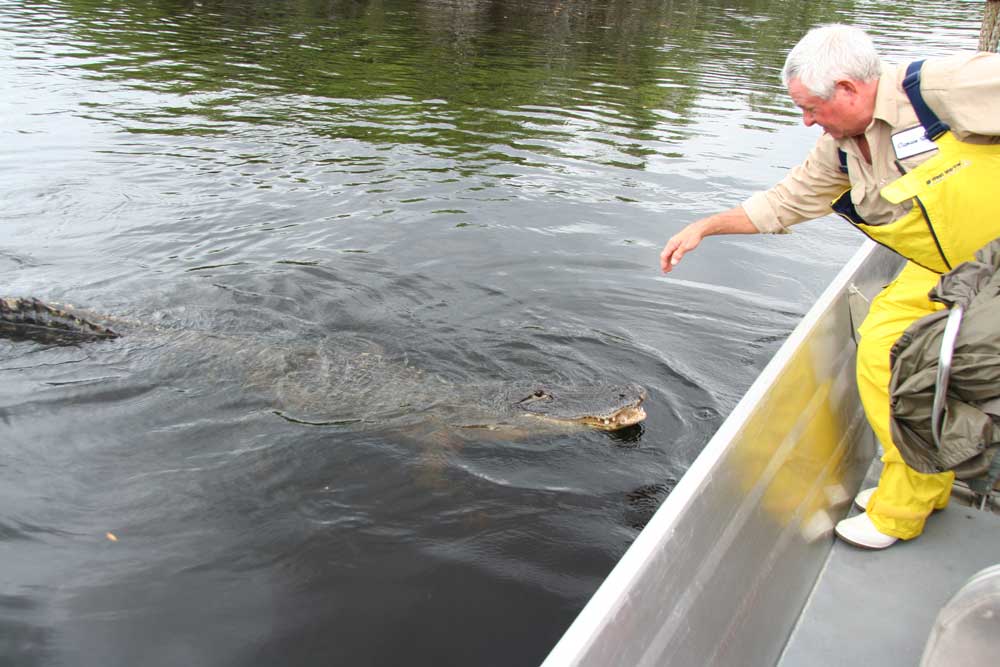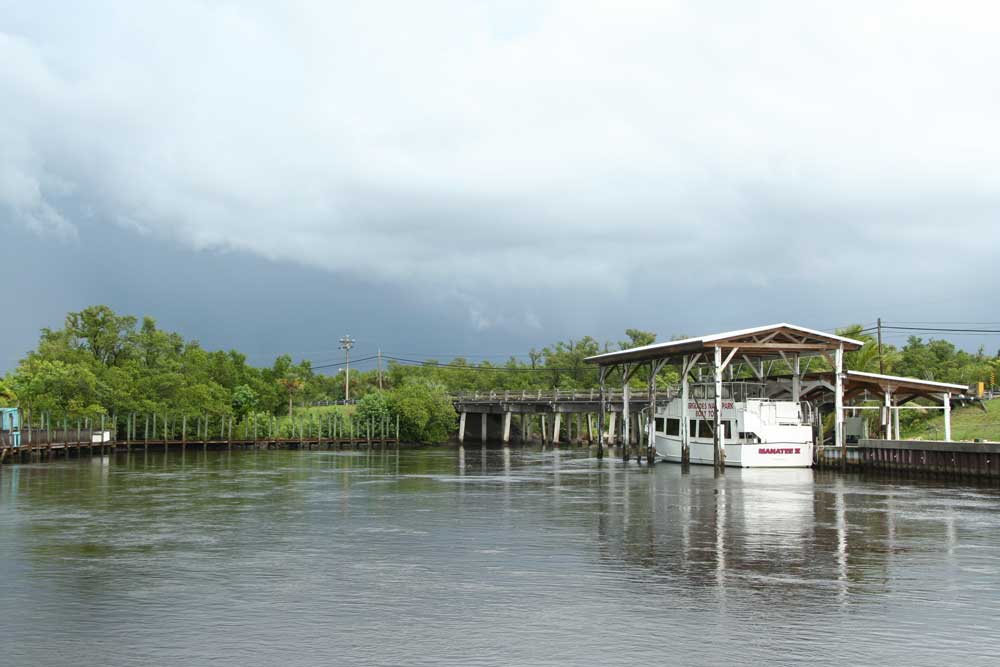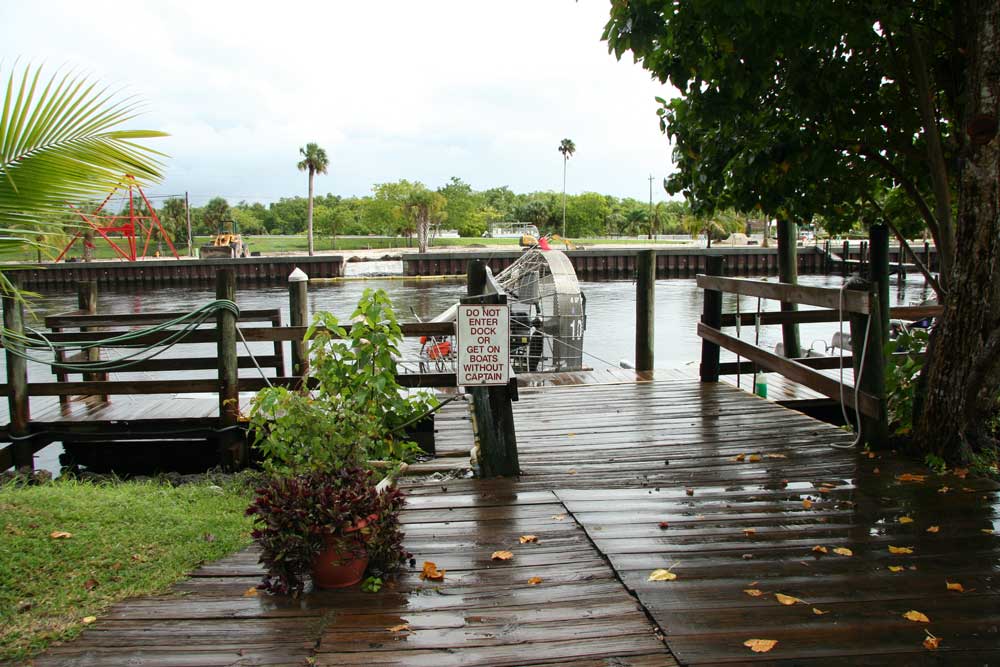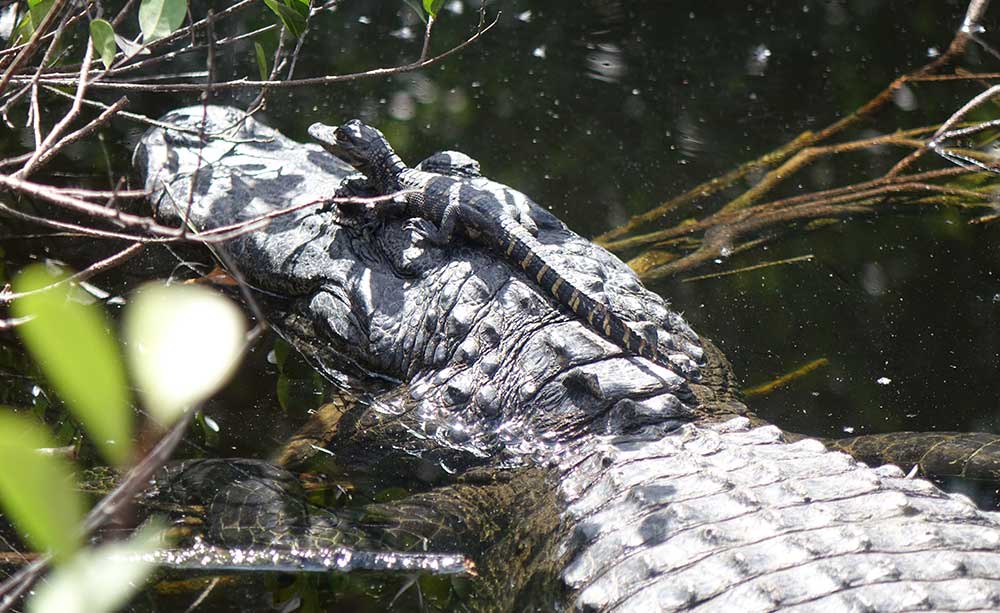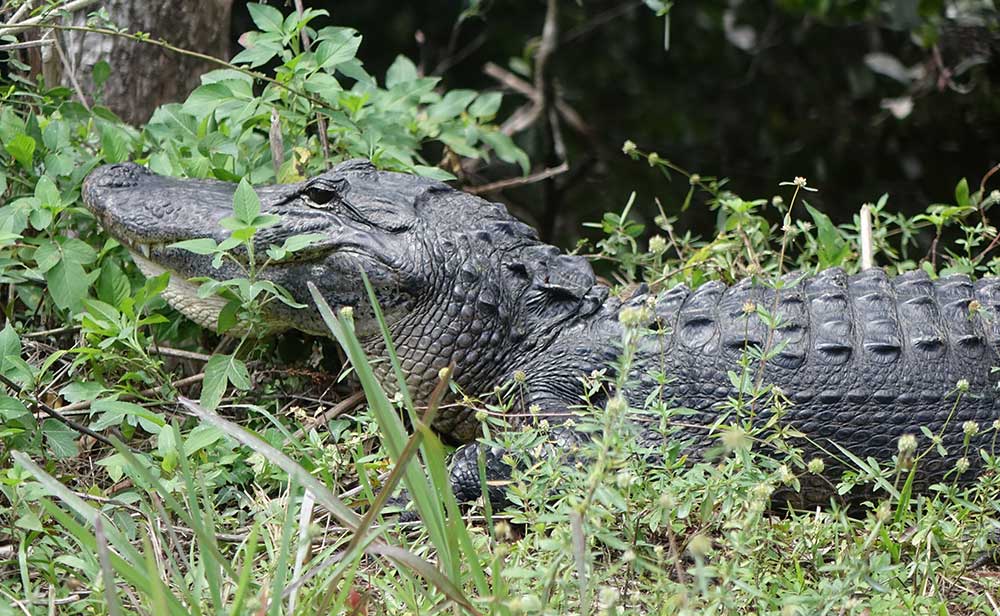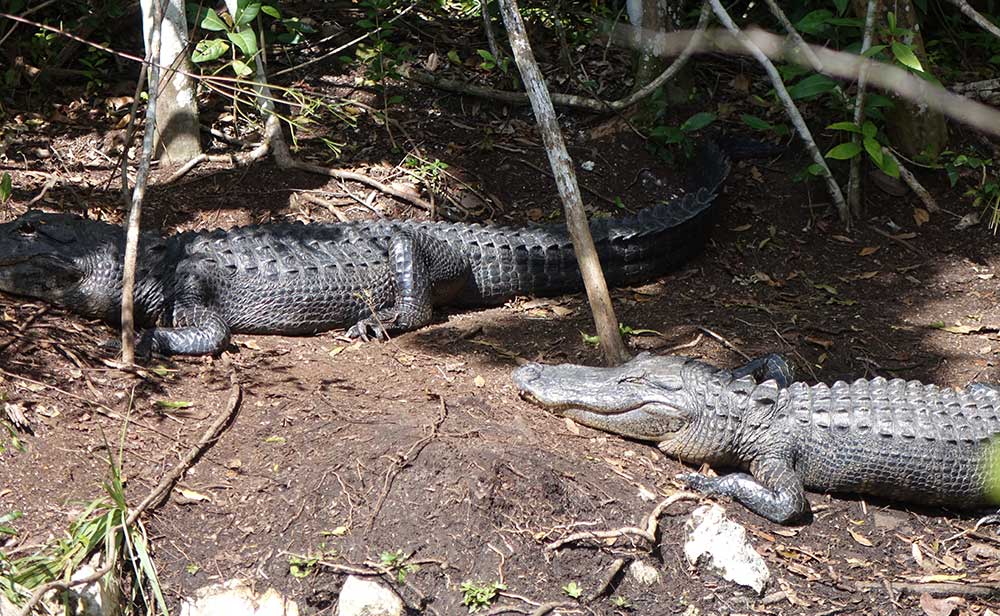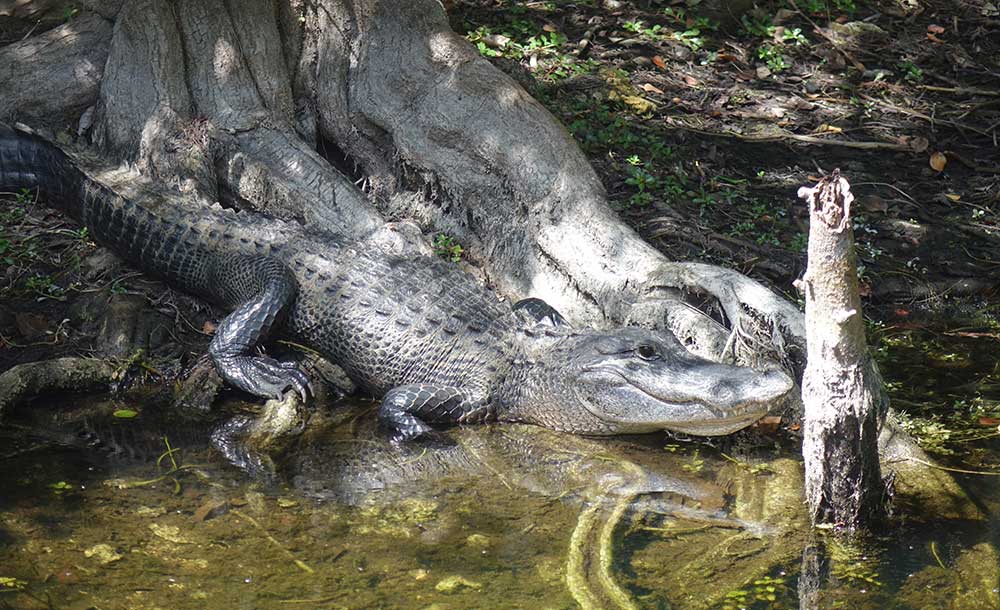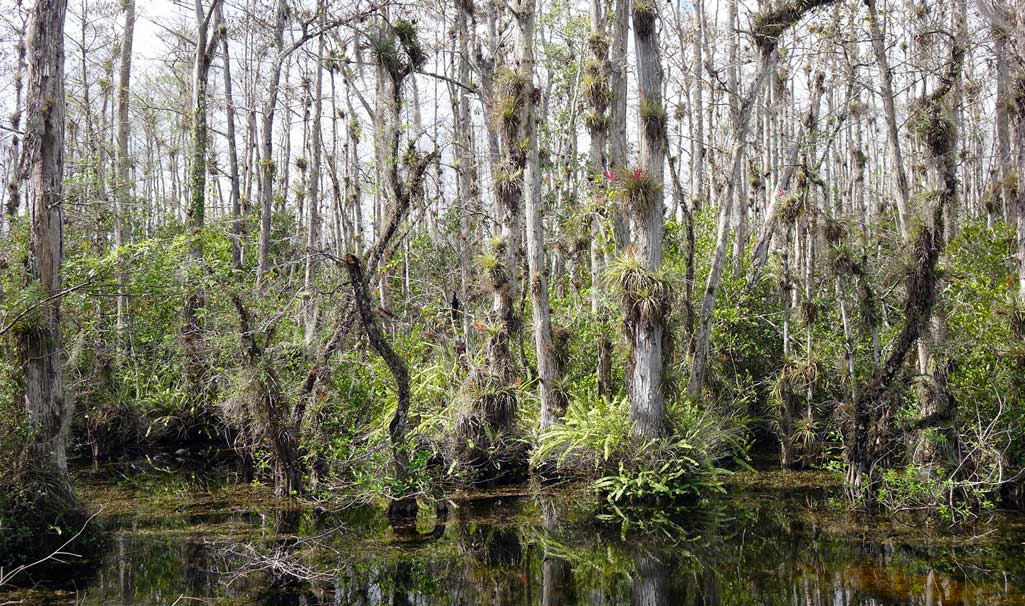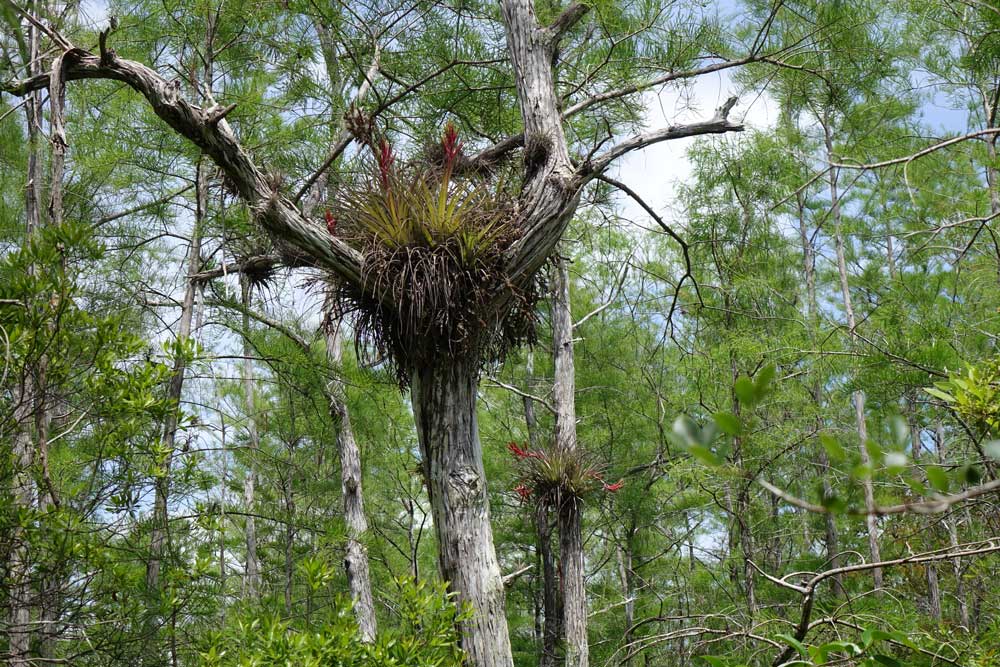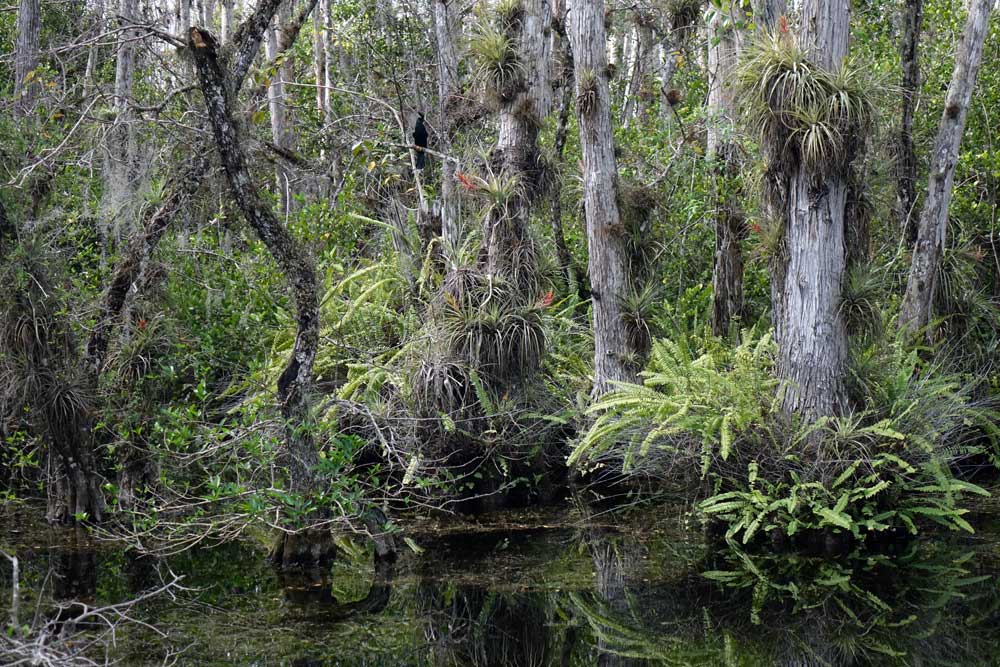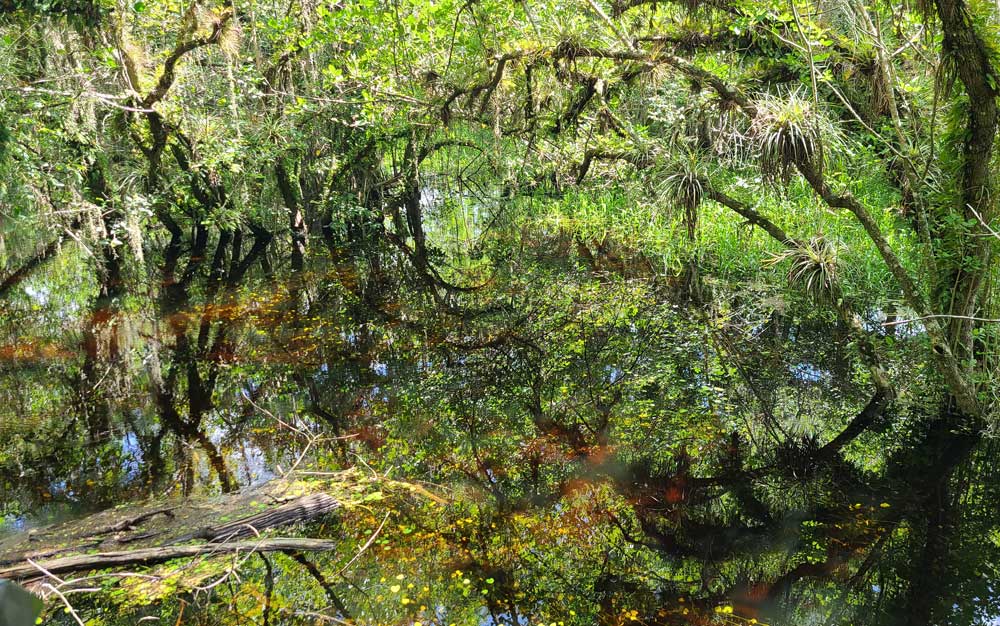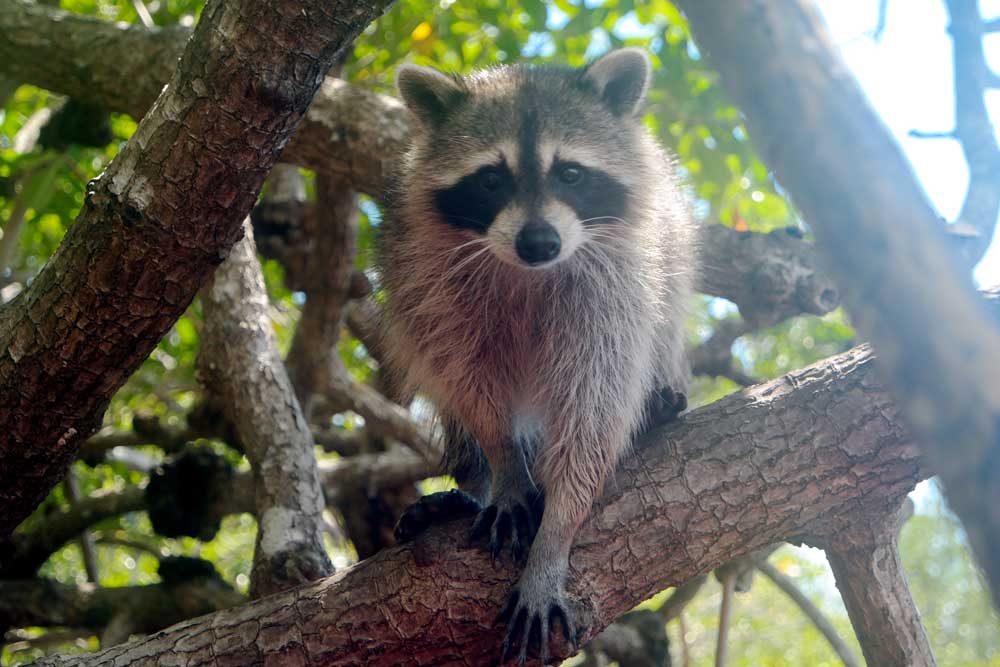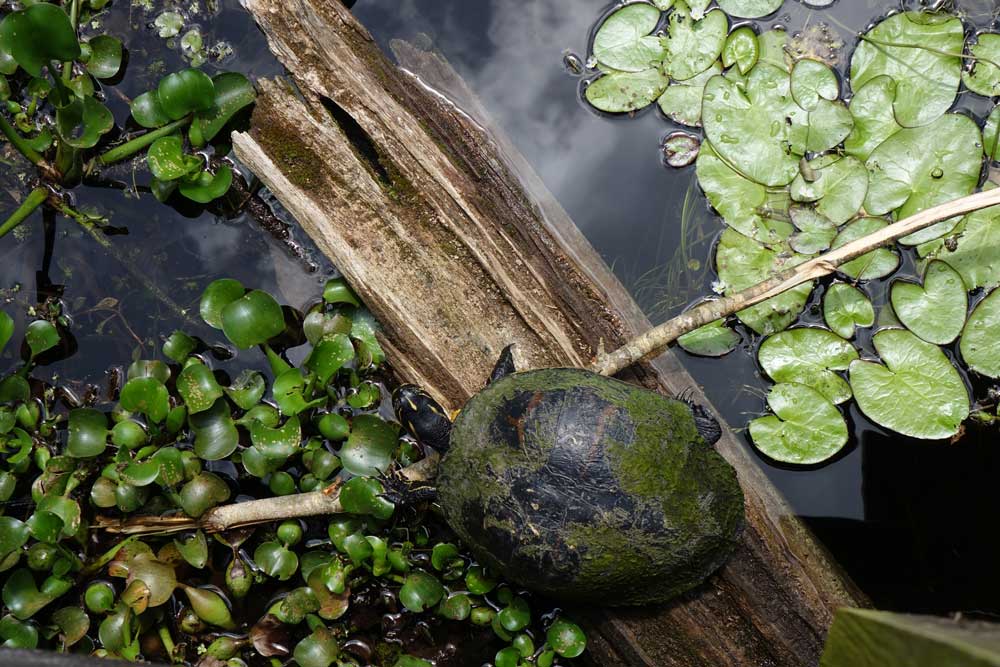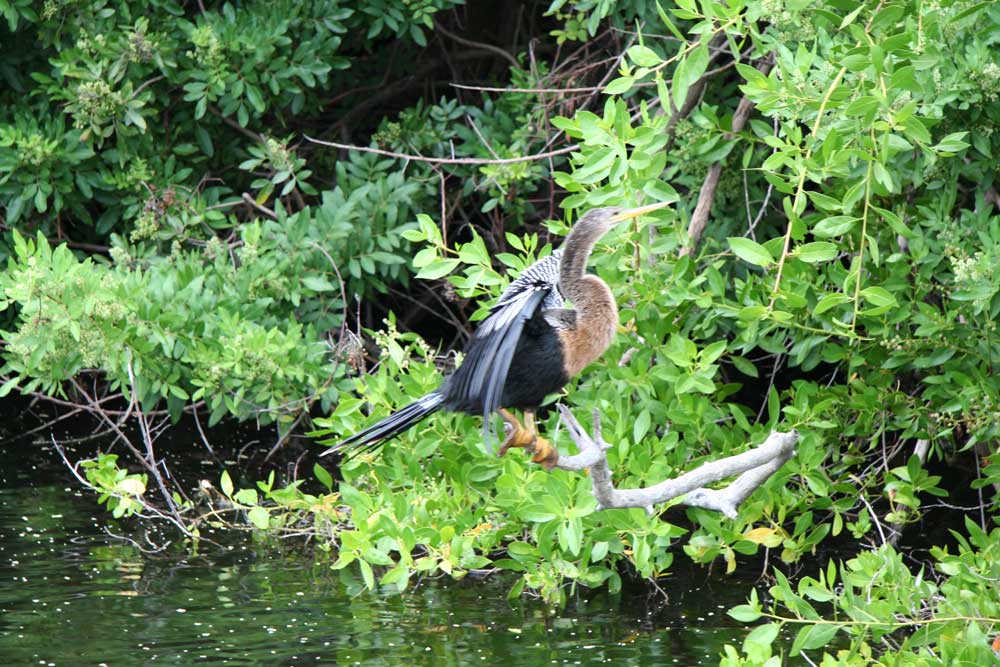Everglades | Whispering Grasses in Glittering Waters

Welcome to North America’s largest tropical swamp! I’ll show you Florida’s untamed wilderness – with alligators (not crocodiles) and rare birds, endless mangroves and other exotic plants, as well as breathtaking waterways. Whether by airboat or on foot, a real adventure in the heart of nature awaits you here!
The Everglades – Key Facts at a Glance
- Unique ecosystem – The Everglades are North America’s largest subtropical wetland with an impressive wildlife.
- The best time to visit is from November to April with pleasant temperatures, little rain, and comparatively fewer mosquitoes.
- Easy accessibility – Only 30 to 60 minutes from Miami, ideal for day trips.
- Diverse activities – Airboat tours, hiking trails, kayaking, and wildlife observation.
- Entrance fees – $35 per vehicle, ticket valid for 7 days.
Climate and Weather
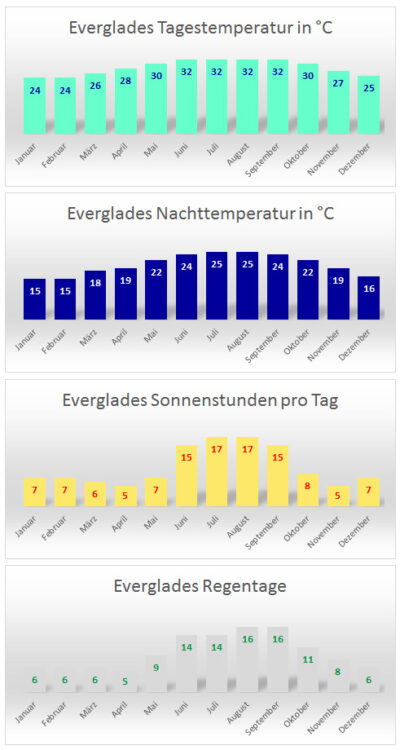
Information Route Planner
| Size | 2358 mi² |
| County | Collier County, Monroe Miami Dade County |
| Coordinates | 25° 43 “80° 35” W |
| Area code | +1305 |
| Info | Ernest F. Coe Visitor Center |
The Perfect Day in the Everglades
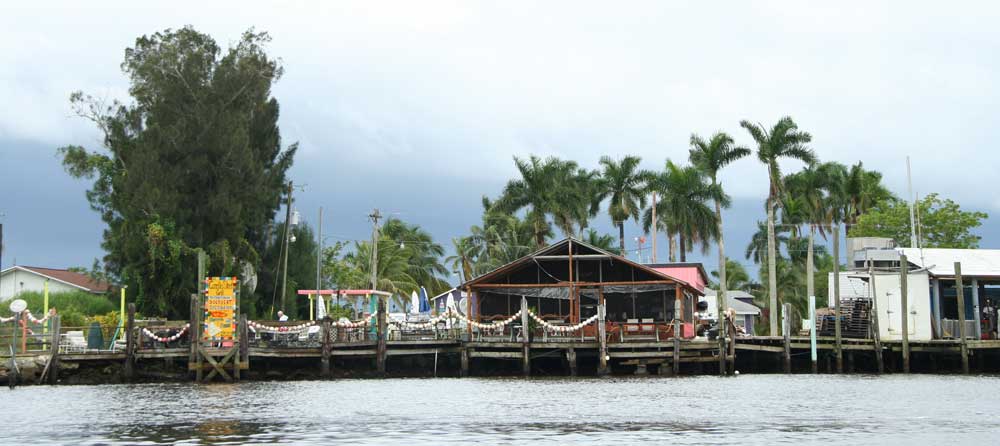
Before we plunge into the tranquility and seeming infinity of the Everglades, literally into the “clear water”, we must protect ourselves well against mosquitoes, especially in the summer months. However, the winter or so-called dry season is recommended as the best time to visit.
We begin our tour at the Royal Palm Visitor Center with a short walk along the half-mile Anhinga Trail. A ranger helps us discover the remarkable birdlife, including the long-billed anhinga, after which the trail is named. Here, we can also make our first acquaintance with the dangerous alligators, which we’ll get to know better later.
After this truly scenic tour, we drive towards Flamingo. Our first stop, about seven miles in, is the three-quarter-mile Pineland Trail, which we explore in a stop-and-walk manner. At Mahogany Hammock, we take a look at the largest living mahogany tree in the USA.
We unpack our coolers at one of the numerous picnic areas. While enjoying chilled lemonade and sandwiches, we listen to the chirping, tweeting, and croaking of herons, frogs, and countless other species, which, enveloped by the gentle rustling of sawgrass and cypresses, creates the unmistakable “Everglades sound”.
After lunch, we take an airboat tour, which is offered throughout the area. With a bit of luck, the captain will entertain us with an impressive feeding of the predators, namely alligators, which prefer to devour marshmallows. The fact that the local risks his fingers, hands, and entire arms is deceptive, but at least very exciting – especially for children.
In the evening, we can still enjoy the dreamy sunset over the access road of the Pa-hay-okee lookout point before savoring alligator tails or frog legs in Everglades City.
Activities Highlights in the Everglades
No post found!
Events
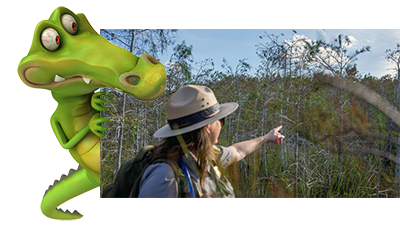
The Everglades National Park
The largest subtropical wetland in North America and a unique natural spectacle is a sixty-kilometer-wide and only fifteen-centimeter-deep river that languidly flows, or rather seeps, at a barely noticeable pace of just one meter per hour. The Everglades, consisting of ‘Ever’ (endless expanse) and ‘-glades’ (open areas covered with grasses and rushes), are also called the River of Grass. The marshland area extends from Lake Okeechobee in the north to the Ten Thousand Islands in the south.
Geological Composition
The swampland was formed by Florida’s geological composition with its specific climate. Southern Florida consists of a plate of porous limestone. This plate slopes very gently southward towards the Gulf of Mexico. The largest depression in this limestone plate is Lake Okeechobee, a lake that, at about 1,800 square kilometers, is roughly three times the size of Lake Constance. Since the elevation difference between Okeechobee and the Gulf of Mexico is only about five meters, and the highest natural point in the national park is only 2.4 meters above sea level, it takes the water about a year to travel 160 km to reach the sea.
From May to October, during the rainy season, the lake overflows, sometimes bringing up to 1,200 liters per square meter of water. Due to the low slope of the earth’s surface, the water pressure is very low, so the water fails to carve out a riverbed and regularly floods the land by a few centimeters. During the dry season, the Everglades then dry out, increasing the risk of bushfires.
Division of the Everglades
In 1947, the Everglades were declared a national park. Since 1979, they have been part of the UNESCO World Natural Heritage, which designated them as an “International Biosphere Reserve”. About half of the original area of the Everglades is now used for agriculture, while the other half mostly belongs to the national park and adjacent nature reserves.
The Everglades National Park encompasses only about twenty percent of the original wetlands in its southern part. The only road connection into the park leads from Florida City via State Road SR 9336 about sixty kilometers to Flamingo in the southwest. Except for the visitor center and some other small facilities in the park, the original state has been preserved. There are camping opportunities in Flamingo and at more than forty other locations, although their use requires more or less intensive mosquito protection depending on the season.
On the developed paths in the park, far from any hustle and bustle of civilization, you can observe the breathtaking nature and great diversity of animal species. Shark Valley is particularly known for its abundance of wildlife. From this trail, alligators, cormorants, herons, anhingas, fish, and turtles can be observed up close.
A Paradise Being Lost Unstoppably
The marshland of the Everglades, repeatedly interspersed with small forest islands and bordered by natural channels, is considered one of the world’s most endangered ecosystems. About half of the original area of the Everglades is now used for agriculture, while the other half mostly belongs to the national park and adjacent nature reserves.
How it all Began
As farmers, cattle ranchers, sugarcane growers, and all the other people flooding into Florida settled the land, they diverted more and more water from the Everglades for their use. Additionally, agricultural wastewater, especially from Cuban sugarcane cultivation, increased the phosphate content of the water, endangering the growth of sawgrass.
At the beginning of the 20th century, the then-governor of Florida, with the suspiciously famous name Napoleon Bonaparte Broward, initiated one of the world’s most destructive interventions in nature: He had the Caloosahatchee River redirected and connected to Lake Okeechobee. To make the land arable, hundreds of canals were laid through the swampland, and the lake was dyked. This turned uninhabited areas into farmland. At the time of the national park’s establishment, additional lands were released for agricultural use.
Kidney Failure of the Everglades
All of this has led to a reduction in the natural freshwater supply and insufficient natural pollutant purification of the river. Its so-called “kidney function” for pollutant removal was no longer sufficient, and the ecological balance was severely disturbed. The prolonged drought, together with the fires in the 1980s, put additional strain on the biotope.
The water of the Everglades is partly used for drinking water production for adjacent cities such as Miami. The wetlands clean the so-called Florida Aquifer, which ensures the drinking water supply as a groundwater conductor. Today, it is seriously endangered by pollution and drying out. In addition, there are high mercury levels and, unfortunately, the nesting of marsh birds has declined by up to ninety percent since the 1930s.
Growth before Conservation
There are numerous environmentalists who are committed to preserving the landscape, like the tireless fighter Marjory Stoneman Douglas once was. The still acute and unrestricted land development leaves little hope that the tide will turn for the better. The sensitive ecosystem lies directly adjacent to one of the fastest-growing urban regions in the USA.
While six million people were already living in Florida in 2000, the sewage system is still only designed for two million people. Due to the increasingly expensive urban areas like Miami, poor people are retreating from the big cities, and new housing developments are emerging east of the Everglades. Meanwhile, half of the wetlands have already been destroyed.
World Natural Heritage Soon to be Disinherited?
Although the Everglades have been a UNESCO World Natural Heritage site since the late 1970s, they were classified as endangered in 1993 due to increasing environmental pollution from fertilizers and mercury, the draining of the surrounding area, and destruction by hurricanes such as Andrew or Wilma. Therefore, they are now on the Red List of World Heritage in Danger. Between 2007 and 2010, this classification was briefly lifted on the political initiative of the then US government, which was reversed in mid-2010.
History of the Everglades
The Spanish navigator Juan Ponce de Leon from Puerto Rico came to the Everglades from the south in 1513 and discovered the region, which he named Florida. He encountered the natives of the powerful Calusa Indian tribe. They had lived in this area for centuries. Their dwellings were clay huts, they fed on plants and aquatic animals, and worshipped the sun as their supreme deity.
The seafarers tried to conquer the area and brought smallpox to the land. In the middle of the 17th century, the Indians succumbed to the epidemic, while at the same time white settlers in Alabama and Georgia drove out the Miccosukee and Creek Indians living there. The Indians who then found refuge in the Everglades were called Seminoles.
In 1821, the USA bought Florida from the Spanish for five million dollars. The number of settlers increased, and the Seminoles were increasingly pushed to the south of Florida. They rejected the government’s offer to relocate to reservations in Missouri, Louisiana, and Arkansas. So they fought for seven long years against the American army under the leadership of the famous Chief Osceola. Even after burying the hatchet in 1842, deadly conflicts continued to occur in the following years. After an attack by Captain John Parkhill in 1857, only about one hundred Seminole Indian women and men survived these disturbances.
Around the turn of the century, plans began for road and railroad construction in southern Florida. Building land was designated for this purpose. Unfortunately, with the advent of civilization, the ecosystem of the Everglades suffered significantly for the first time. Millions of herons were killed for their splendid plumage. Thanks to the protest of conservationists, laws were finally introduced that prohibited poaching and hunting in the Everglades.
The Audubon Society, founded in 1886, hired game wardens to enforce laws. The society was named after James Audubon. The artist had captured the wonderful marshland world through drawings and engravings of birds and other animals. In 1928, the Everglades became a national park, and the Tropical Everglades National Park Association was established.
President Roosevelt signed the bill to establish the national park in 1934. However, due to bureaucratic obstacles and the outbreak of World War II, the park’s opening was delayed until 1949. The straightening of many waterways from 1947 to 1983 disrupted the ecological balance, which numerous environmental engineers are still working to restore today.







